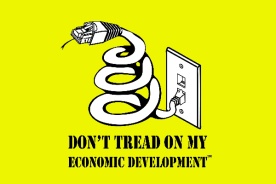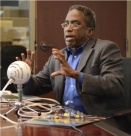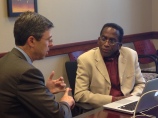Particularly if you are in one of those States with restrictions on muni networks, communities could use some help with these friends: electric and other co-ops, and nonprofit organizations. Co-ops are starting to take note and commit to forming plans to develop community-focused (i.e. cheaper, faster, customer-serving) broadband infrastructure. Nonprofits as potential builders, owners and partners with communities aren’t talked about a lot in the media. However they should be.
Here are some thoughts to wet your whistle. These friends are valuable even if your state doesn’t have any prohibitions on community broadband.
 Co-ops are your friends
Co-ops are your friends
Not only are co-ops good for teaching how to form effective legislative partnerships, they can be great allies on broadband projects. “The City of Montrose is also working on a community anchor institution network project along with others,” says Virgil Turner. “The Delta-Montrose Electric Association (co-op) partnered with our regional council of governments by providing dark fiber to substations near each of the region’s small towns. From the substations, the region is building into carrier neutral location within each town and then on to the anchor institutions.”
There are dozens of co-ops in every heavily rural state, but only a few that are building networks. Observers who follow this industry believe there will be a rapid acceleration as co-ops see the results of successful co-op pilot projects. Co-ops can potentially form partnerships with municipalities and public utilities.
Nonprofits also are your friends
Check your state laws regarding broadband and telecommunications, but I believe there are few, if any, laws that specifically forbid nonprofit organizations from providing broadband services. It may take a year to complete all the paperwork and procedures to create a nonprofit. But a nonprofit that has an economic development mission can raise money that it doesn’t have to re-pay.
The Steuben County Foundation, a nonprofit organization, created a supporting organization called iMAN to build a dark fiber network. iMAN, also a nonprofit, sells access to businesses that contract with ISPs to light the fiber and buy Internet services. 65% of the monthly $225 dark fiber fees go to the Foundation whose Board of Directors selects economic development projects to fund.
iMAN’s network covers 75 miles and generates $80,000/year. Dark fiber rates subsequently are kept affordable, which encourages institutional and business subscribers. Donations and subscription fees continually drive network expansion. ISPs carry the costs – and reap the profits – from selling end-user services, also at affordable rates.
Do your homework! Understand the laws governing nonprofits. Also study networks that where built by organizations such as Steuben County Foundation, the City of Santa Monica IT Department and the City of Wilson, NC IT Department. They only needed a few staff and a consulting firm to get their networks up and running until they were able to recruit ISPs to handle subscribers.
Filed under: Uncategorized | Leave a comment »




 Broadband community, make your voices heard, make a difference in Tennessee! This law has got to go.
Broadband community, make your voices heard, make a difference in Tennessee! This law has got to go. 





